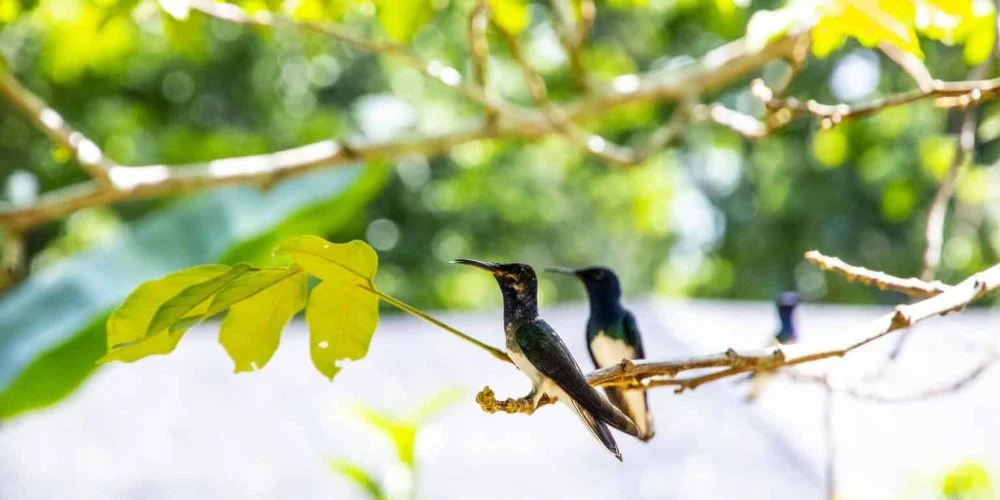
Want to learn more? Take a look at the Compete Hummingbird Guide Book – a classic!
There are 121 different state parks across all of the state and there are also 26 different national parks.
With the amount of state and national parks in Pennsylvania you may think it to be an ideal state for hummingbirds.
However, hummingbirds rarely visit the state and there are only a few sighted species that are present in the state.
The most common of these species is the Ruby-throated Hummingbird. Although, the numbers of Rufous and Calliope hummingbirds are beginning to increase in the state.
Take a look at our article on the Best Hummingbird Feeder!
What Hummingbirds can be seen in Pennsylvania?
Table of Contents
1. Ruby-throated Hummingbird
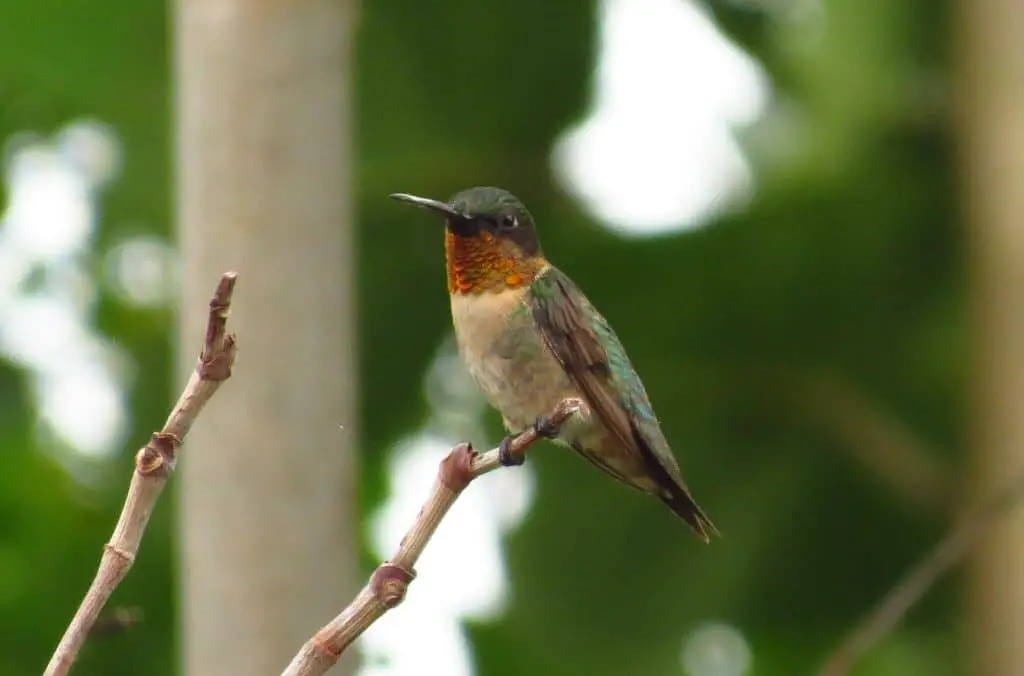
Fun Facts:
- These hummingbirds feed on nectar, particularly the nectar of both orange and red tubular plants such as honeysuckle.
- These birds are tiny and only weigh 2-6g with their wingspan being 8-11cm.
The males of this species are the only individuals to sport bright ruby feathered throats.
The females have white bellies and necks with brown feathers covering their wings and backs.
This is common as most female hummingbirds have duller coloured feathers compared to their male counterparts.
Males use their bright colours to attract females. Males make their territory before the breeding season begins; this is so that he is ready to perform a display flight as soon as a female enters his territory.
These displays involve looping dives of up to 50ft and if the female is impressed, she will move onto the male’s perch before he makes side to side flights in front of her.
You are most likely to see one of these hummingbirds in orchards or meadows, but they are common garden residents too.
These hummingbirds have one of the largest ranges of all hummingbird species.
However, they are usually only present in the USA during their breeding seasons and will move to areas further south in the winter months.
They are most active in Pennsylvania in their breeding seasons, particularly in early spring and they can be seen in all regions of the state.
That being said, they have been most commonly sighted in the south west of the state.
Adding tubular, bright red plants to your garden can help attract them to your home.
2. Rufous Hummingbirds
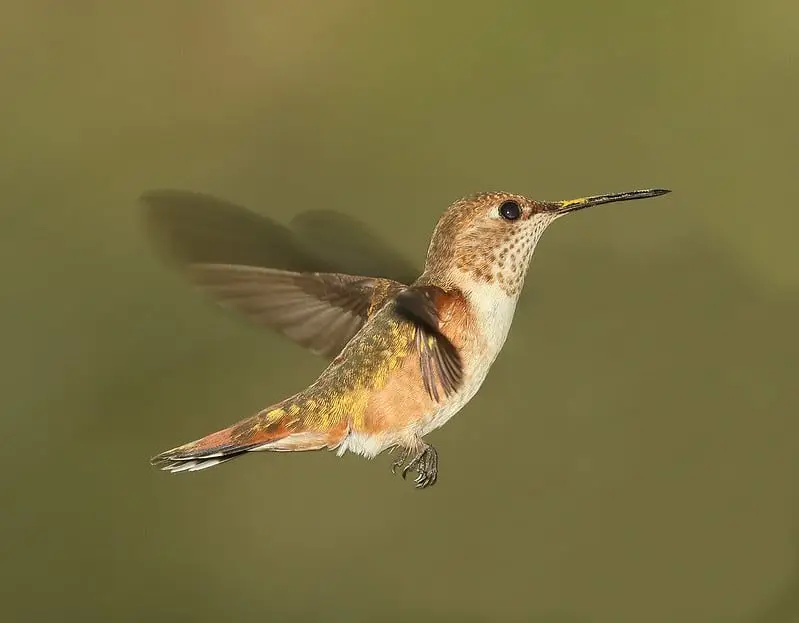
Fun Facts:
- Nectar from tubular plants is the main source of food for this bird.
- These birds are average sized for a hummingbird and weigh 2-5g.
These birds are beautiful, the males have autumnal shades of orange and red feathers covering their body.
Like lots of other hummingbirds, the females of this species have much duller shades of colours on their feathers.
These birds are migratory and if you are lucky you may be able to catch one during its migratory flight.
Outside of their migration periods, you are likely to see these hummingbirds in open areas of lands such as grasslands.
Rufous Hummingbirds are very aggressive, they are territorial and also very protective of food sources.
Food appears to be more important than breeding as males have been seen chasing females away from manmade bird feeders, even in the middle of the breeding season.
They do frequently visit gardens as they will go anywhere with a source of food.
The range of this bird does not officially include the state of Pennsylvania.
However, sightings and spotted areas of migrations have shown that this hummingbird has entered Pennsylvania, only outside of their breeding seasons and most commonly in the winter months.
The sightings of this bird most commonly occur in the south east of Pennsylvania.
It is easy to attract these birds to your garden, you can do this by adding both bright tubular plants and also simple sugar water feeders. Do not color the sugar water for this bird.
3. Calliope Hummingbird
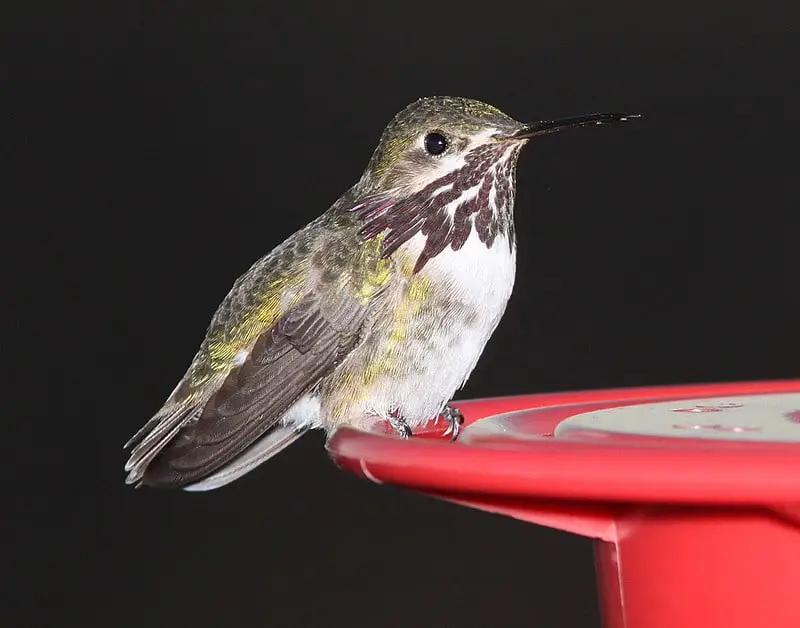
Fun Facts:
- These birds will consume nectar as their main food, usually from cupped flowers.
- Calliope Hummingbirds are on the smaller side only weighing 2.4-3.3g.
Calliope Hummingbirds have striking white bellies, the males of this species can be identified by their scattered purple plumages.
The females have the same bellies and same green backs as the males. These hummingbirds are known for their unique courtship displays, the male flaps his wings in a very specific and unique way.
The frequency of their wing beats creates a sound akin to that of a buzzing bee.
Males of this species are very defensive and will often spend their time on a high perch observing their territory.
Apart from this, not a lot is known about this bird due to its limited range making it more difficult to study.
It is not confirmed as to whether it is a monogamous species of hummingbird or not.
Much like the Rufous hummingbird, the range of this bird does not include Pennsylvania, despite the sightings.
They have only been seen in the state outside of their breeding seasons.
Occasionally during migration but most commonly in the winter months. You can only see this bird in the south eastern regions of Pennsylvania.
They are not common garden residents, but you can increase your chances of seeing one by adding sugar water feeders to your garden.

More Articles.

If you’re thinking about taking your child birdwatching, the most important thing is having equipment
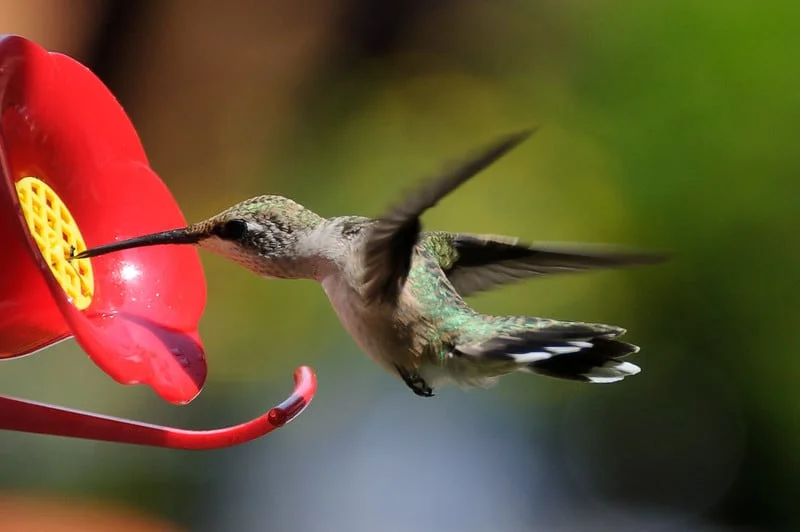
What time of day should you feed hummingbirds?
Hummingbirds are most known to prefer to visit a feeder and flowers as the sun

What does it mean to see a Phoenix in your dream? (Symbolism and Meaning)
Seeing a Phenoix in your dream can symbolize a fresh start, a new beginning, or

About Us
We are avid bird-watchers who recently retired, allowing us more time to travel the world. Fortunately, we have managed to visit numerous countries around Europe, Asia, and America. Watching and photographing birds has been a passion for many years and we are making the most of the extra time on our hands!
